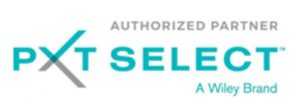

SeibCo now offers the market’s newest selection assessment tool, PXT Select™
New tool provides insights into candidates’ cognitive abilities, behavioral traits and interests for smarter hiring
DENVER–June 26, 2017—Jeannette Seibly, principal of SeibCo, LLC, recently added the innovative new selection assessment PXT Select™ tool to her business offerings, and completed its certification process. The new hiring assessment tool empowers organizations to navigate the competitive talent landscape with confidence and ease.
“We are proud to partner with SeibCo to bring this new assessment tool to market,” says Scott Allison, Vice President and Director at Wiley. “Our partners are trusted advisors to their clients and have a powerful impact on organizations. Great organizations know that success begins with hiring the right people. By working with PXT Select and SeibCo, organizations of all sizes and industries experience greater insight and confidence in their hiring process.”
Too many organizations make crucial hiring decisions based solely on impressions rather than data. Powered by the latest advancements in assessment technology, PXT Select provides the hiring manager with insight into a candidate’s cognitive abilities, behavioral traits, and interests, including tips about the candidate’s potential job fit and relevant job-specific interview questions.
“People are like icebergs: they only let you see what they want you to see,” explains Seibly. “What you don’t see is more significant than what you do see! As a result, the PXT Select answers the ‘why’ many business owners, executives and managers have about their employees and their business results. When businesses hire and promote the right people, they improve their staff, profitability, and performance results.
“For example, a company recently hired a sales manager who had a great resume, interviewed well and seemed to be a team player,” Seibly continues. “After a few months, the company realized he preferred to work alone, wasn’t concerned about the progress of others, and was slow and inaccurate with figures. The company could have known these things about him by using PXT Select in the hiring process.”
About PXT Select
PXT Select makes the very human decisions about hiring simpler and smarter. Combining over 20 years of research with powerful assessment technology, PXT Select and its intuitive suite of reports helps fill the gap between the resume and the interview. This powerful selection assessment provides organizations with actionable, objective data about candidates and employees in a simple to understand format that help them to interview better and hire smarter. PXT Select is available exclusively through the PXT Select Authorized Partner network. Learn more at www.SeibCo.com/contact/ OR https://www.pxtselect.com/SeibCo
About SeibCo
Seibly has been an award-winning, internationally recognized business advisor and executive coach for over 24 years, and is designated as a PXT Select™ Certified Professional. Along the way, she has guided the creation of three millionaires and helped over 25 companies produce million-dollar results. Seibly’s publishing credits include: Hire Amazing Employees and It’s Time to Brag! Business Edition. Contact her at http://SeibCo.com/contact or 303-660-6388.
